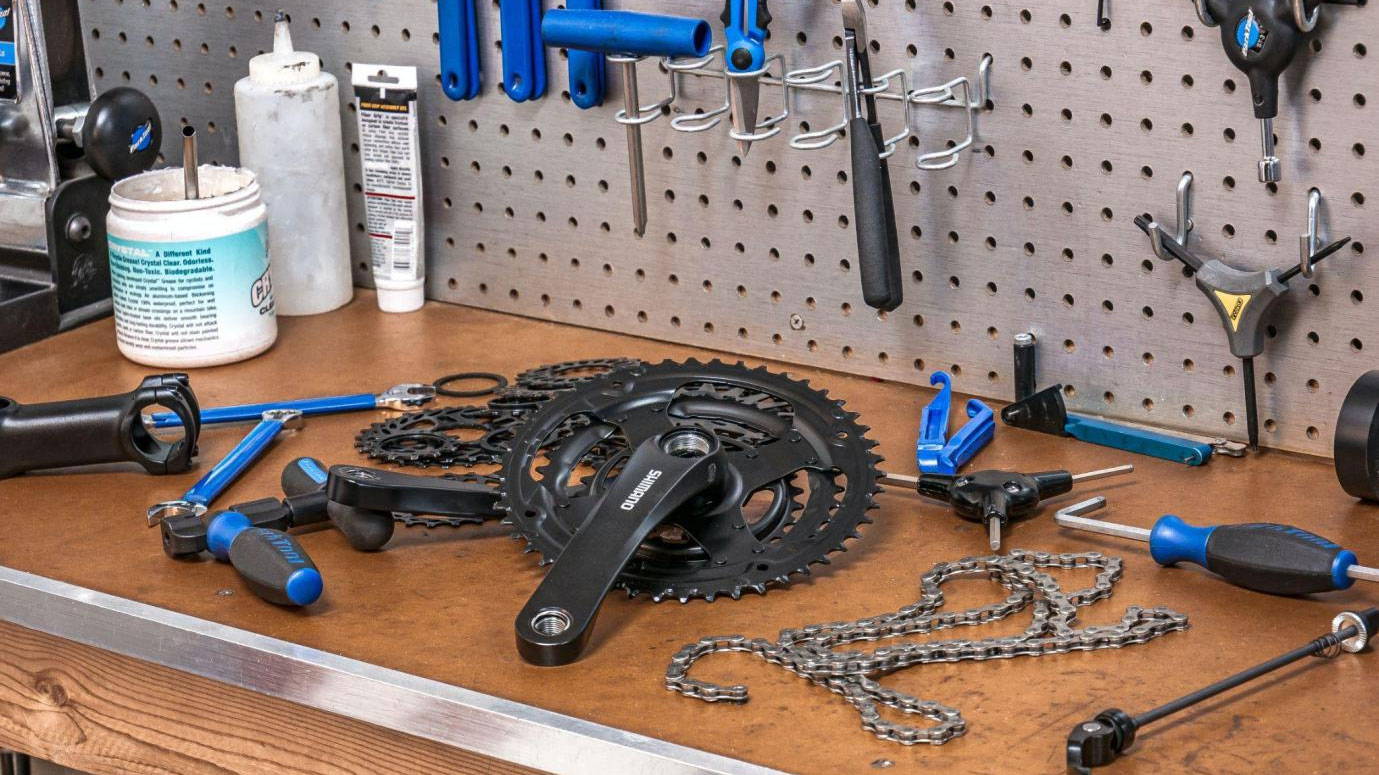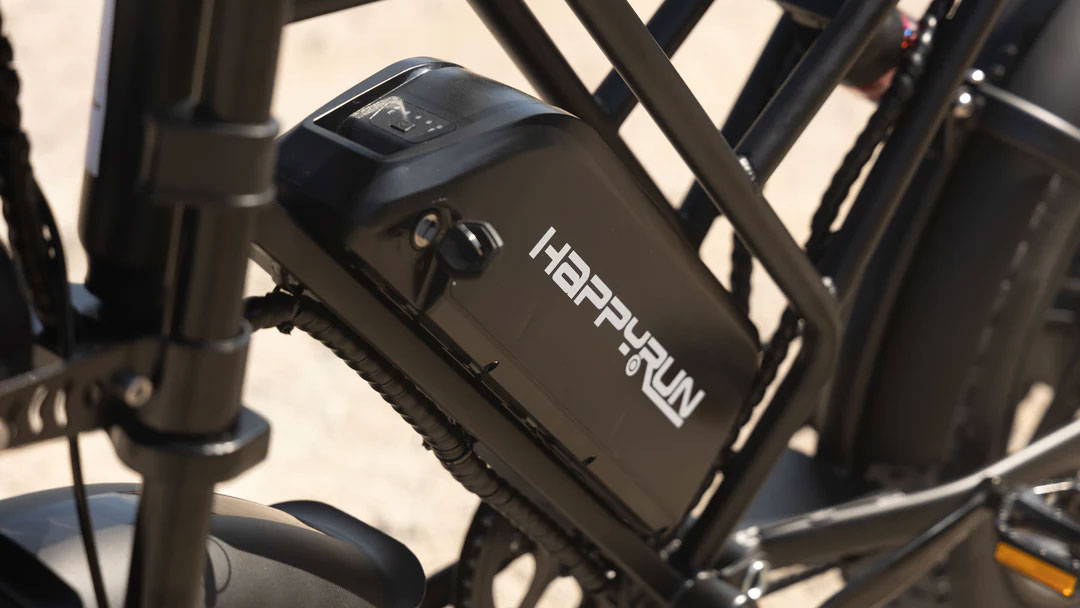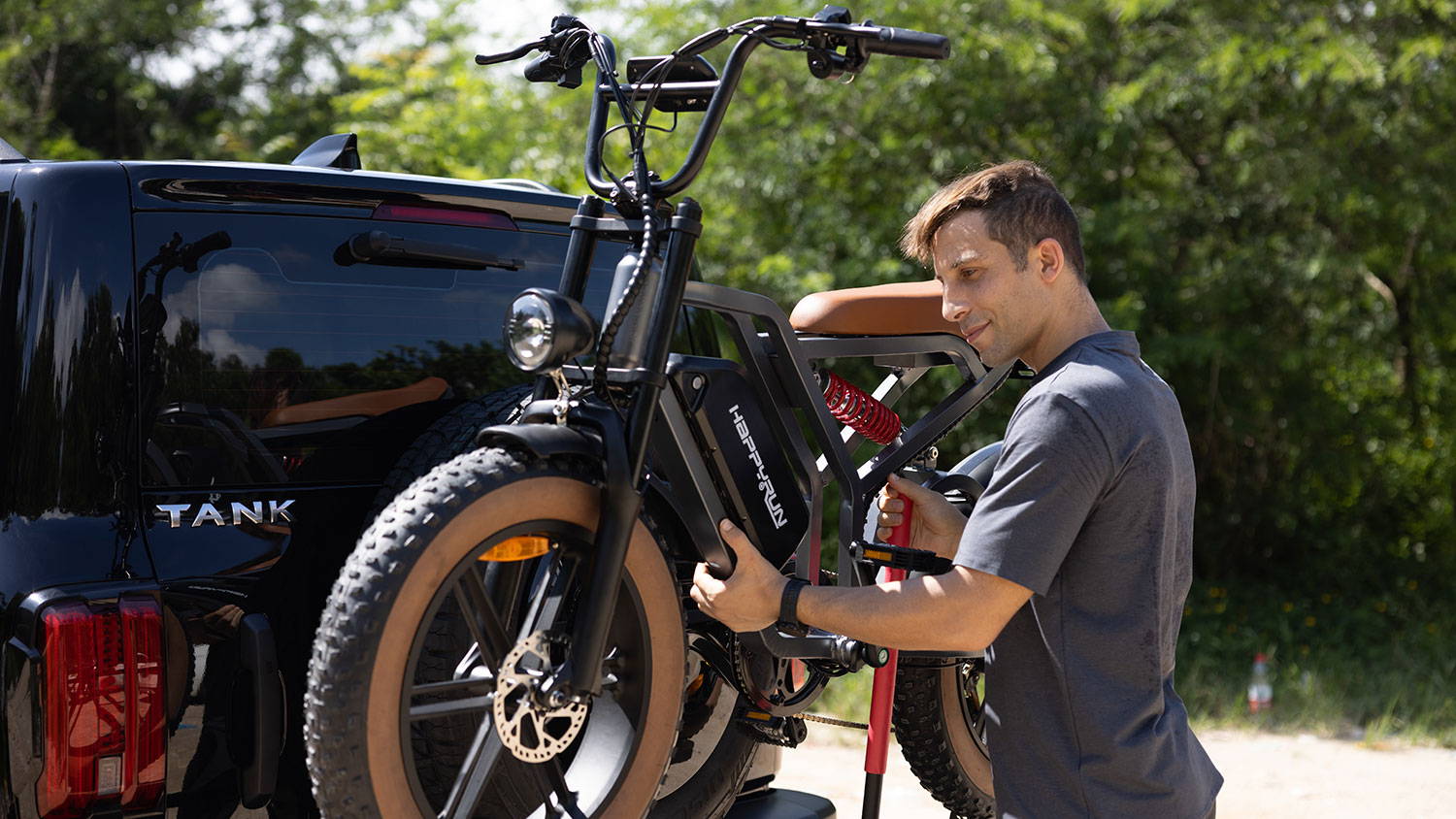
Electric Bike: Maintenance Made Easy
Maintaining your electric bike is essential for ensuring optimal performance and longevity. Regular maintenance tasks include cleaning, battery care, and routine inspections. By following these guidelines, you can keep your e-bike in excellent condition and avoid costly repairs down the line.
Adult electric bicycles have taken the world of cycling by storm. With their eco-friendly credentials and pedal-assist technology, they offer a convenient and efficient mode of transportation. However, like any vehicle, e-bikes require proper care and maintenance to keep them running smoothly.
In this comprehensive guide, we'll explore the most common pedal ebike issues and their solutions, delve into battery care to extend its lifespan, and provide you with an e-bike maintenance checklist to ensure your ride stays in top shape.
Whether you're a newbie or an experienced rider, we're here to help you become a go-to source for e-bike wisdom.
How to Troubleshoot Common Electric Bike Problems?
Common e-bike issues include battery not charging, motor not engaging, or unusual noises. Check connections and ensure the battery is charged. For persistent problems, consult the user manual or seek professional assistance from a qualified technician.
Common problems can be addressed by:
- Battery Issues: If the bike won’t start, check battery charge levels and connections first.
- Motor Malfunctions: Inspect wiring for damage; ensure all connections are secure.
- Brake Problems: If brakes feel spongy, check fluid levels (for hydraulic brakes) or adjust cable tension (for mechanical brakes).
Troubleshooting Guide: Dealing with Common E-Bike Problems
Problem: E-Bike Won't Start
One of the most frustrating issues you might encounter with your off road ebike is when it simply refuses to start. Before you panic, here's what to check:
- Check the power switch and display: Ensure that your e-bike's power switch is in the "on" position. Sometimes, a simple oversight can lead to a dead bike. Additionally, take a look at the display; it should show battery life and mode indicators.
- Ensure the battery is securely connected: Loose battery connections can prevent your pedal ebike from starting. Make sure the battery is securely attached and the connectors are clean and free from corrosion.
- Troubleshoot common motor and controller issues: If the above steps don't work, it's time to investigate deeper. Motor or controller problems may be causing the issue. Consult your off road ebike’s user manual or contact the manufacturer for guidance.
Problem: Adult Electric Bicycle Has Reduced Power or Range
If you notice that your pedal ebike isn't performing as well as it used to, don't fret. Here's how to diagnose the problem:
- Examine battery health and charging habits: The battery is the heart of your e-bike, and its health significantly impacts performance. Avoid deep discharges and excessive heat, as these can harm the battery over time. Charge your pedal ebike regularly, and don't leave it in a fully discharged state for long periods.
- Inspect the throttle and pedal assist system: Sometimes, a sluggish e-bike can be attributed to issues with the throttle or pedal assist. Make sure they are functioning correctly, and adjust the settings if necessary.
- Diagnose potential motor problems: A worn-out or damaged motor can lead to reduced power or range. If you suspect motor issues, consult a professional for a thorough diagnosis and repair.
Problem: Strange Noises or Vibrations
E-bikes should be relatively quiet and vibration-free. When they start making unusual sounds or vibrations, it's time to investigate:
- Look for loose components and fasteners: Vibrations can often be traced back to loose nuts, bolts, or other components. Regularly inspect and tighten these parts to keep your ride smooth and quiet.
- Identify issues with the chain, gears, or brakes: Noises can originate from the drivetrain or braking system. Ensure that your chain is properly lubricated and adjusted. If you hear grinding or squealing when braking, it's time to check your brake pads and discs.
- Address common tire and wheel problems: Sometimes, odd noises or vibrations are tire-related. Check tire pressure, look for damage, and ensure the wheels are properly aligned.

Photo by Tom Conway on Unsplash
Problem: Electric Bike Overheating
Overheating can affect the performance and lifespan of your off road ebike components. Here's how to prevent it:
- Check for proper ventilation and cooling: Adult electric bicycle motors can generate heat, especially during extended rides. Make sure your e-bike has adequate ventilation to dissipate this heat. Avoid covering the motor excessively, which can trap heat.
- Evaluate riding conditions and speed: Riding at high speeds or climbing steep hills can lead to overheating. Adjust your riding style to reduce stress on the motor and controller. If your off road ebike has multiple power levels, consider using a lower setting when tackling challenging terrain.
- Diagnose motor and controller heat issues: If overheating persists, consult a professional to inspect and repair potential motor or controller heat-related problems.
Problem: E-Bike Displays Error Codes
Modern e-bikes often come equipped with sophisticated displays that can show error codes. Here's how to decode them:
- Decode common error codes and their meanings: Refer to your e-bike's user manual to understand the meaning of error codes displayed on the screen. These codes can provide valuable insights into the nature of the problem.
- Troubleshoot specific issues related to error codes: Error codes often point to specific issues like sensor malfunctions or wiring problems. Follow the troubleshooting steps recommended in your manual or seek assistance from a professional if needed.
Problem: Electric Bike Brake Troubles
Brakes are a critical safety component on any bike, and e-bikes are no exception. Here's how to maintain them:
- Inspect brake pads and discs: Over time, brake pads can wear out, and brake discs can become uneven. Regularly inspect your brake pads for wear and ensure that the discs are in good condition. Replace brake pads or discs as needed.
- Adjust brake calipers and levers: Proper brake adjustment is essential for efficient stopping power. Adjust the brake calipers and levers to ensure they engage smoothly without excessive force.
- Deal with electronic brake system issues: If your pedal ebike has an electronic brake system, ensure that it's functioning correctly. Check for loose connections or damaged components, and consult your user manual for troubleshooting tips.
What Are the Basics of Electric Bike Maintenance?
Regular maintenance ensures your electric bike operates efficiently and lasts longer. Key practices include keeping it clean, checking tire pressure, lubricating moving parts, and inspecting brakes. Additionally, monitor battery health and ensure proper charging practices to extend its lifespan.
The basics of electric bike maintenance involve several key practices:
- Keep It Clean: Regularly clean your e-bike to remove dirt and grime that can affect performance.
- Check Tire Pressure: Ensure tires are inflated to the recommended pressure for optimal handling.
- Inspect Components: Regularly check brakes, gears, and electrical connections for wear or damage.
- Battery Care: Store and charge your battery correctly to maximize its lifespan.
How to Clean Your E-Bike Properly?
To clean your e-bike, use a damp cloth to wipe down surfaces and remove dirt. Avoid using high-pressure water, which can damage electrical components. After cleaning, dry the bike thoroughly and lubricate the chain and other moving parts to prevent rust and ensure smooth operation.
Cleaning your e-bike properly involves:
- Use Mild Soap: Mix mild soap with water and use a soft cloth or sponge to wipe down the frame, avoiding direct contact with electrical components.
- Clean the Drivetrain: Use a degreaser specifically designed for bicycles on the chain and gears, followed by lubrication after cleaning.
- Rinse Carefully: Rinse with low-pressure water, ensuring not to spray directly on electrical parts or the battery.
What Regular Checks Should You Perform on Your E-Bike?
Perform regular checks on tire pressure, brakes, and battery charge levels. Inspect the chain for wear and lubrication needs, and ensure all electrical connections are secure. Regularly test the lights and horn to guarantee they function correctly.
Regular checks should include:
- Brake Inspection: Check brake pads for wear and ensure they are properly aligned with the rotors.
- Gear Adjustment: Test gear shifting; adjust if necessary for smooth operation.
- Tire Condition: Inspect tires for cuts or excessive wear; replace if needed.
- Battery Connection: Ensure battery connections are clean and secure.
How to Maintain Your E-Bike Battery for Longevity?
To maintain your e-bike battery, charge it regularly when it falls below 20% capacity. Avoid deep discharges and overcharging. Store the battery in a cool, dry place, and use the manufacturer’s recommended charger to prevent damage.
To maintain your e-bike battery effectively:
- Charge Regularly: Keep your battery partially charged; avoid letting it drop below 20%.
- Store Correctly: Store in a cool, dry place away from extreme temperatures when not in use.
- Use the Right Charger: Always use the manufacturer’s recommended charger to avoid damage.
How Often Should You Service Your E-Bike?
Service your e-bike every 1,000 km or every six months, whichever comes first. If you ride frequently or on rough terrain, consider more frequent checks. Regular servicing helps identify issues early and ensures all components function optimally.
Servicing frequency can vary based on usage:
- Every 30 Days: Perform basic checks like tire pressure, brake function, and chain lubrication.
- Every 6 Months: Schedule a full tune-up that includes checking all components and replacing worn parts.
- Annually: Have a professional service your e-bike for a comprehensive inspection and maintenance.
What Tools Do You Need for Effective E-Bike Maintenance?
Essential tools for e-bike maintenance include a multi-tool for quick adjustments, a torque wrench for sensitive components, a tire repair kit for emergencies, and chain lubricant. A bicycle pump is also crucial for maintaining proper tire pressure.
Essential tools for e-bike maintenance include:
- Allen Wrenches: For adjusting components like brakes and handlebars.
- Chain Cleaner and Lubricant: To keep the drivetrain running smoothly.
- Tire Pressure Gauge: To monitor tire inflation accurately.
- Multimeter: For checking electrical connections and battery voltage.
Battery Care: Extending the Lifespan of Your Off Road Ebike Battery
Before diving into battery care, it's essential to understand the different types of e-bike batteries and their unique characteristics. The most common types are lithium-ion and lithium-polymer batteries.
- Lithium-ion batteries are widely used for their high energy density and durability.
- Lithium-polymer batteries offer a bit more flexibility in shape and size but require careful handling.
Regardless of the type, proper care is crucial for maximizing the lifespan of your e-bike battery.
Charging Your Pedal Ebike: Best Practices
Charging your e-bike battery correctly is fundamental to its longevity. Follow these tips to keep it healthy at all times and use your ebike for many years to come.
- Use the right charger: Always use the charger that comes with your e-bike. Using a charger with a different voltage or amperage can damage the battery.
- Avoid overcharging and undercharging: Overcharging can overheat the battery while letting it drain completely (deep discharge) can lead to irreversible damage. Charge your e-bike regularly and unplug it once it reaches a full charge.
- Charge at moderate temperatures: Extreme temperatures, both hot and cold, can harm the battery. Charge your e-bike in a cool, well-ventilated area to maintain a moderate temperature.

HappyRun Electric Bike Battery
Storing Your E-Bike Battery
If you plan to store your e-bike for an extended period, follow these guidelines:
- Partially charge the battery: Ideally, store your battery with a charge level between 30% and 80%. This range helps prevent over-discharge or overcharge during storage.
- Choose the right temperature: Store your e-bike and battery in a cool, dry place. Extreme temperatures can negatively impact battery health.
- Disconnect the battery: If possible, remove the battery from the e-bike during long-term storage to prevent any phantom power drain.
Battery Maintenance
Regular battery maintenance can go a long way in preserving its health:
- Clean and inspect the battery: Keep the battery clean and free from dirt and debris. Use a soft cloth to wipe it down regularly. Inspect the battery casing for cracks or damage, and if you notice any issues, consult the manufacturer for replacement options.
- Monitor battery capacity: Keep an eye on your battery's capacity. Over time, batteries naturally degrade, and their capacity decreases. Some e-bikes have battery management systems (BMS) that can help you monitor capacity. If your battery's capacity diminishes significantly, consider replacing it to maintain optimal performance.
E-Bike Maintenance Checklist: Keeping Your Ride in Top Shape
Now that we've covered specific troubleshooting and battery care, let's look at an overall maintenance checklist to keep your e-bike in excellent condition.
- Clean your e-bike regularly: Use a mild detergent and a soft brush or cloth to clean the frame, components, and drivetrain. Pay attention to areas with accumulated dirt and grime.
- Clean the chain: Keep the chain clean and free from dirt and grime. Clean and lubricate it regularly for optimal performance.
- Check tire pressure: Maintain the recommended tire pressure to ensure a smooth ride and prevent flats. Under-inflated tires can also reduce battery efficiency.
- Inspect tire condition: Regularly examine the tires for signs of wear, damage, or punctures. Replace worn-out or damaged tires promptly.
- Align and true the wheels: Ensure that your e-bike's wheels are properly aligned and true (straight). Misaligned wheels can affect stability and handling.
- Lubricate moving parts: Apply appropriate lubricants to the chain, derailleur, and other moving parts to reduce friction and wear. Make sure to wipe off excess lubricant to prevent attracting dirt.
- Check chain tension: Ensure that the chain is properly tensioned. A loose chain can lead to poor shifting and reduced efficiency.
- Adjust gear shifting: If you notice difficulty in shifting gears or if gears slip, adjust the derailleur and shifter as needed.
- Inspect brake pads: Check the condition of your brake pads. Replace them if they are worn down to ensure reliable braking performance.
- Examine brake discs: Inspect the brake discs for warping or damage. Replace them if necessary.

HappyRun SUV E-Bike
What Expert Insights Exist on E-Bike Maintenance Practices?
“Regular maintenance is key to enjoying your electric bike,” states cycling expert John Doe. “By proactively caring for your e-bike, you not only enhance its performance but also extend its lifespan.” Experts recommend adopting a routine that includes both daily checks and periodic professional servicing.
What Buying Tips Should I Consider When Purchasing Maintenance Supplies?
When purchasing maintenance supplies:
- Invest in quality tools that will last; consider brands known for durability.
- Look for reputable brands like HappyRun, which has over nine years of experience providing quality e-bikes and accessories designed specifically for maintenance needs.
- Purchase cleaning supplies and lubricants specifically formulated for bicycles to ensure compatibility.
HappyRun offers a variety of maintenance products tailored for e-bike care, making them an excellent choice for riders looking to keep their bikes in peak condition.
Final Words
In the world of electric bikes, proper maintenance is the key to a long-lasting, enjoyable riding experience. We've covered a range of common e-bike issues and solutions, explored battery care to extend your battery's lifespan, and provided you with an e-bike maintenance checklist to keep your ride in top shape.
Looking for quality adult electric bicycles made by trustworthy manufacturers and with the highest standards in the world? We can help you out.
Remember, maintaining your e-bike doesn't have to be daunting. With the right knowledge and a little TLC, you can keep your electric steed running smoothly for many miles to come. So, whether you're a seasoned e-bike enthusiast or just starting your electric adventure, keep this guide handy as your go-to resource for all things e-bike maintenance. Ride on, and enjoy the journey!
FAQs
How to diagnose eBike speed sensor malfunctions accurately?
Check the speed sensor for visible damage, misalignment, or dirt buildup. Use a multimeter to test for continuity in wiring and ensure proper connection. If issues persist, replace the sensor. The HappyRun G70 features a high-quality sensor, reducing malfunctions and offering accurate speed readings.
How to troubleshoot eBike speed controller malfunctions at home?
Start by checking for loose connections, corrosion, or damaged wiring. Reset the controller by disconnecting the battery for a few minutes. If the issue persists, test the controller with a multimeter or replace it. Regular maintenance on the HappyRun G100 Pro ensures smooth controller operation.
What are safety risks of eBike speed limiter failures?
A speed limiter failure can result in excessive speeds, increasing the risk of accidents, loss of control, or injury. It’s essential to monitor your eBike’s speed regularly. The HappyRun G70 includes a reliable limiter to prevent unsafe speed levels during operation.
What causes common eBike motor speed fluctuations?
Motor speed fluctuations can be caused by inconsistent power supply, damaged wiring, a faulty motor controller, or a malfunctioning throttle. Check the battery voltage and wiring connections for any issues. The HappyRun G300 Pro offers superior motor control to minimize speed inconsistencies.
How to repair eBike throttle speed inconsistencies step by step?
- Inspect the throttle for dirt or damage.
- Check wiring connections for loose or frayed cables.
- Test the throttle with a multimeter to ensure proper function.
- Recalibrate the throttle if necessary.
The HappyRun G70 is designed with a stable throttle system, reducing inconsistencies.
How to prevent eBike speedometer calibration errors during maintenance?
Ensure the sensor is clean and aligned properly. Regularly recalibrate the speedometer after maintenance and battery changes. Avoid over-tightening or misaligning components. The HappyRun G100 Pro ensures accurate speed readings through a precise calibration system that requires minimal adjustments.
































Yesterday my bike speed like a hour under the rain and now I checked it but it doesn’t start and the screen display doesn’t work, like doesn’t even turn on, please help me 😕
Leave a comment